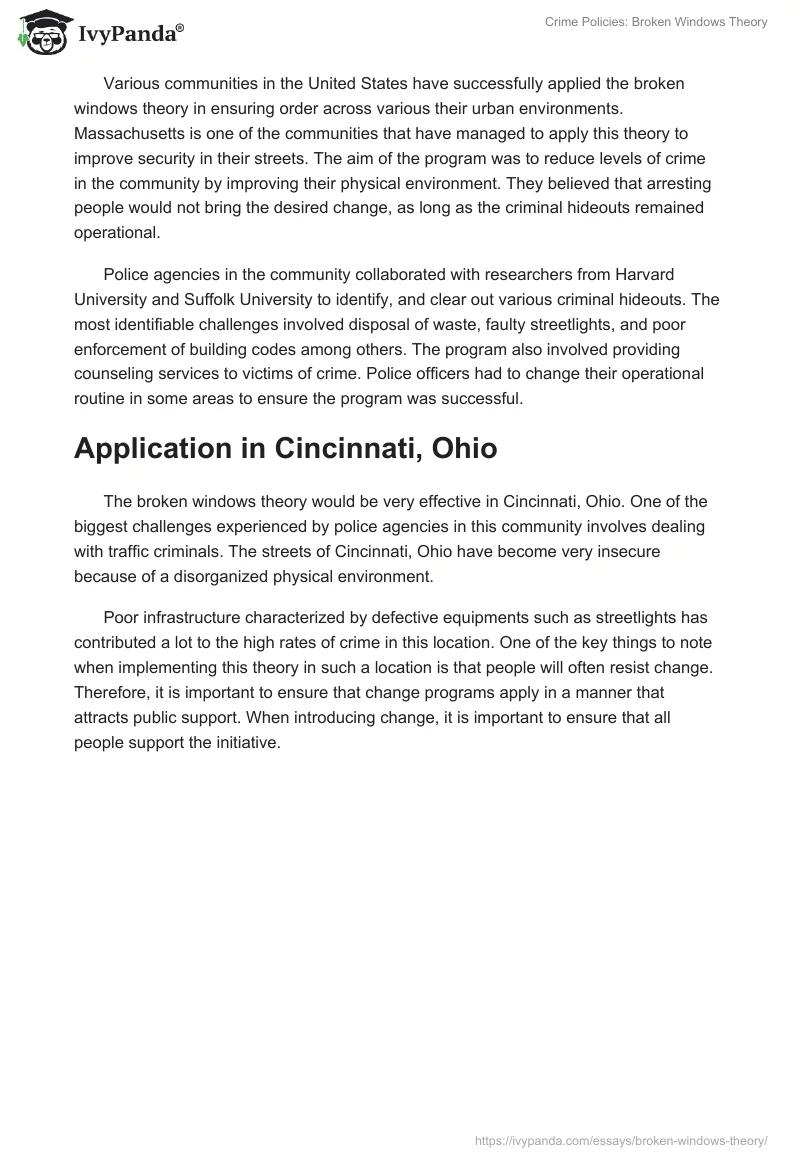Introduction
Broken windows theory refers to a hypothesis related to criminology. The theory identifies, and explains certain observations on how to manage crime and explicit behavior in urban environments. According to the theory, proper maintenance and monitoring of urban areas plays a crucial role in providing security to people.
James Wilson and George Kelling introduced the broken windows theory in 1982. The social scientists discussed the theory through an article published in the United States. Since then, the theory has attracted a wide range of unfavorable judgment from various people. Police department of the United States has been among the main beneficiaries of this theory. Various state governments apply the theory in developing their policies on crime. A crucial element about this theory is the concept of fear.
According to criminology experts, the broken windows theory develops upon this concept. This explains the reason why it is widely used police agencies. The police agencies classify public disorder as one of the major problems they deal on a daily basis. They argue that it acts as a source of fear among community members. Disorder in urban environments often elevates fear among people. This results in the development of a social prototype that reduces cohesion among community members.
Discussion
In one of their publications, James Wilson and George Kelling argued that modern policing has shifted its focus from ensuring order to dealing with escalating levels of crime in urban environments. This phenomenon resulted from riots that begun developing in urban areas during the 1960s.
The riots disrupted social order and security among urban communities. This created an urgent need for police agencies to maintain the safety of streets by reducing mass violence. This is a clear indication that police agencies still apply this theory in their work.
Various communities in the United States have successfully applied the broken windows theory in ensuring order across various their urban environments. Massachusetts is one of the communities that have managed to apply this theory to improve security in their streets. The aim of the program was to reduce levels of crime in the community by improving their physical environment. They believed that arresting people would not bring the desired change, as long as the criminal hideouts remained operational.
Police agencies in the community collaborated with researchers from Harvard University and Suffolk University to identify, and clear out various criminal hideouts. The most identifiable challenges involved disposal of waste, faulty streetlights, and poor enforcement of building codes among others. The program also involved providing counseling services to victims of crime. Police officers had to change their operational routine in some areas to ensure the program was successful.
Application in Cincinnati, Ohio
The broken windows theory would be very effective in Cincinnati, Ohio. One of the biggest challenges experienced by police agencies in this community involves dealing with traffic criminals. The streets of Cincinnati, Ohio have become very insecure because of a disorganized physical environment.
Poor infrastructure characterized by defective equipments such as streetlights has contributed a lot to the high rates of crime in this location. One of the key things to note when implementing this theory in such a location is that people will often resist change. Therefore, it is important to ensure that change programs apply in a manner that attracts public support. When introducing change, it is important to ensure that all people support the initiative.


